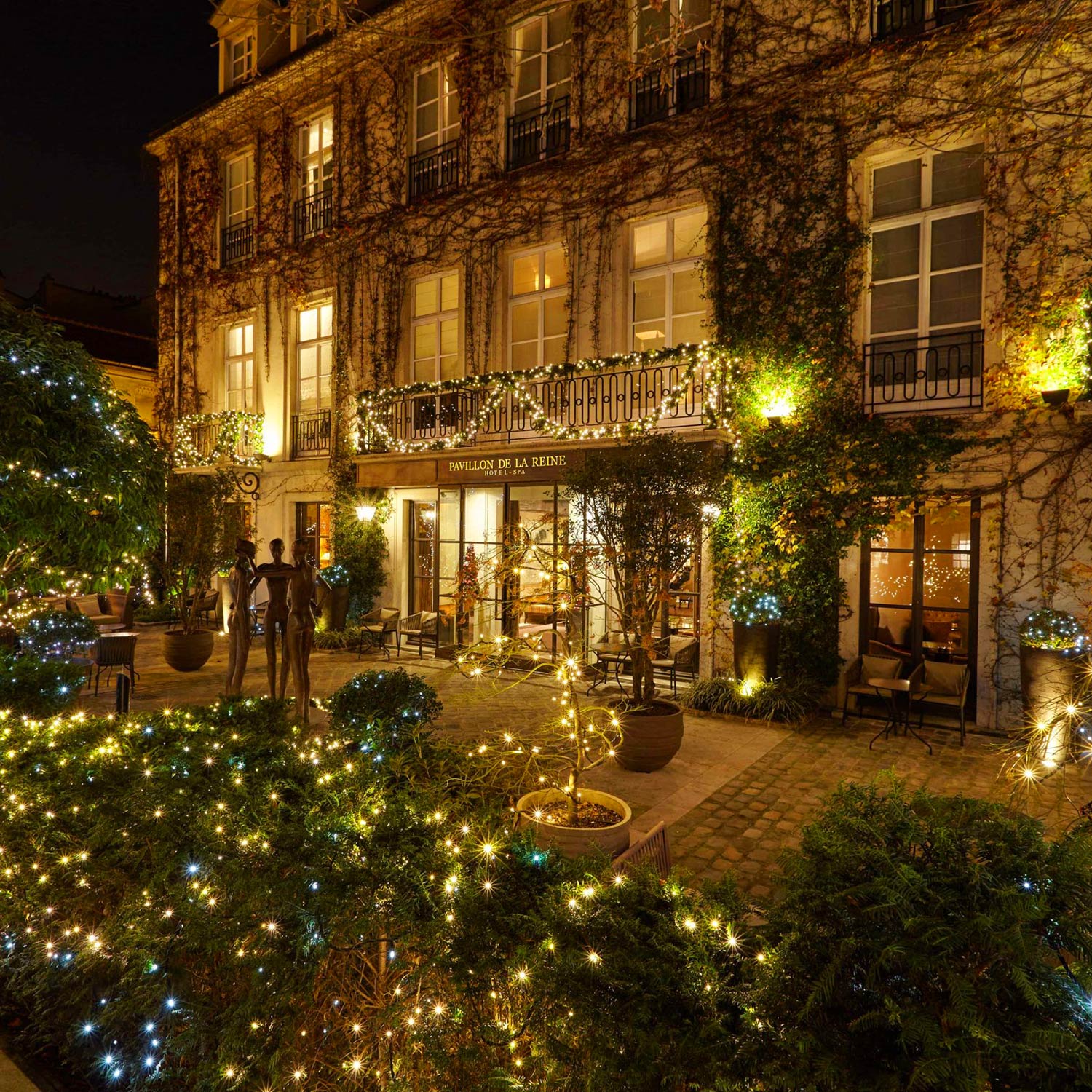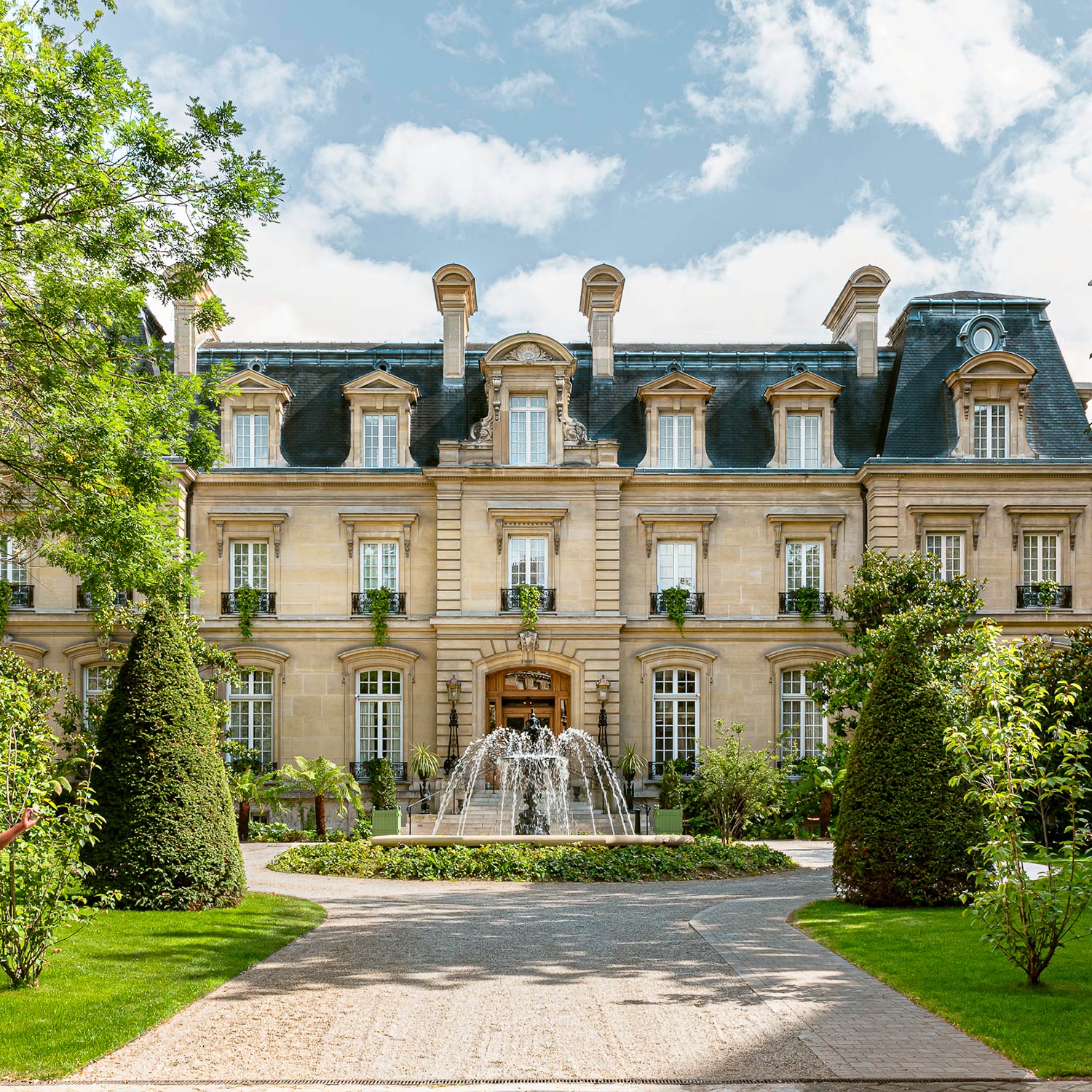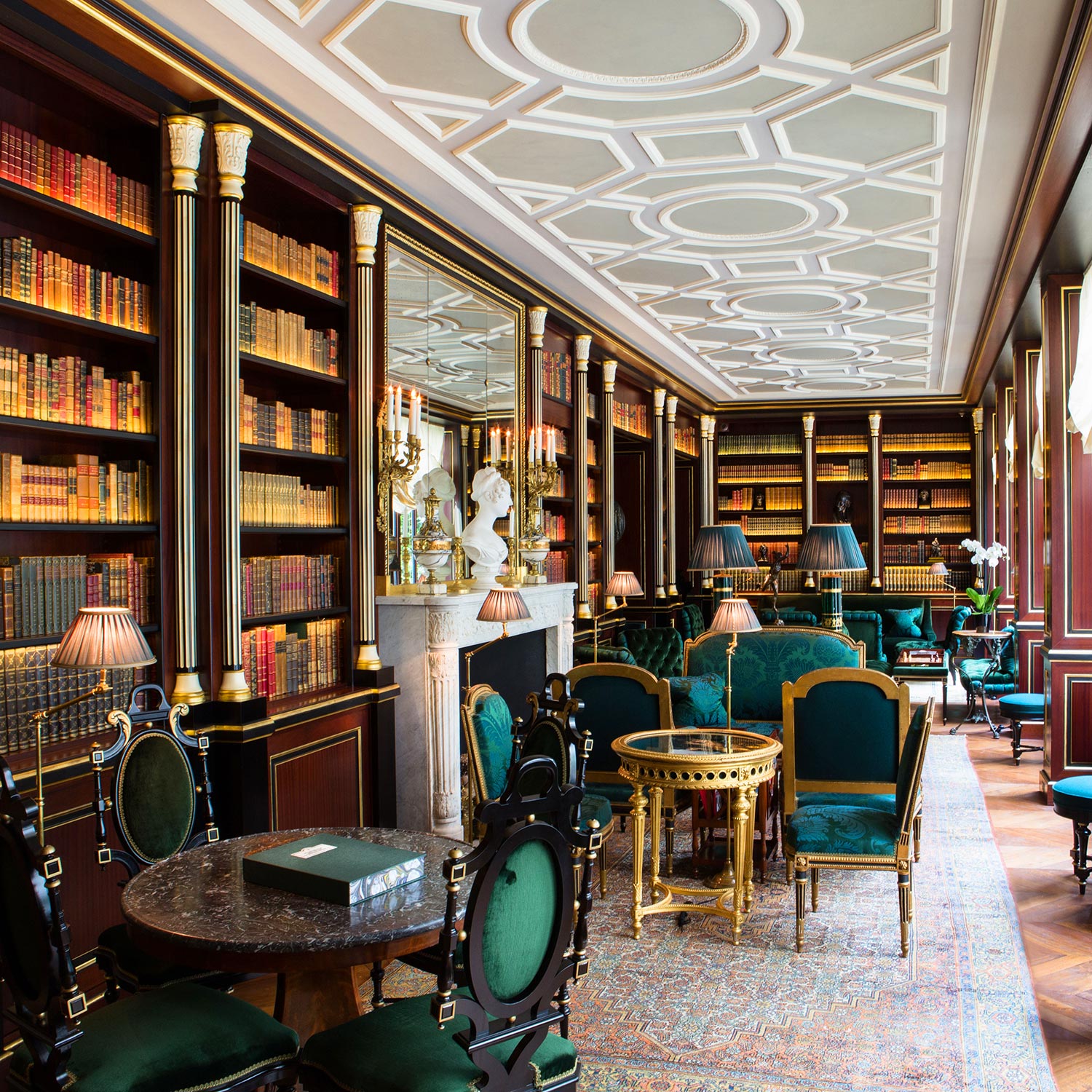
The hôtel particulier is a wonderfully French concept. For nobles, these old mansions once represented country living in the heart of the city. For you, they provide access to a particularly rich way of experiencing Paris.
By Manon Tomzig
Journalist and travel writer, Tablet contributor
See our entire selection of hotels in Paris.
It was around the 17th century, when Paris became attractive to French nobles and bourgeois — it’s hard to imagine it hadn’t always been so — that they felt the need to build sufficiently large and comfortable alternatives to their country castles. And build they did. These hôtels particuliers sprang up in the center of Paris, flanked by walkways, courtyards, and hidden gardens. Luxurious havens designed as worlds apart. Members of the court first settled in the Marais district and on the Left Bank of the Seine, and then, little by little, hundreds of private estates sprang up throughout the city. These places embodied power, elegance, and the French art of living.
Then came the French Revolution. Wealthy families were forced to flee the capital, abandoning their sumptuous residences. If not completely destroyed, these were subsequently sold, subdivided, and sometimes transformed into government ministries, embassies, or museums. Those that weren’t are rare. More mansions were built later in the 19th century, of course, but not at the same scale, and very few remain as a single-family refuge. Fewer still open their doors to guests.
Now, let’s pause to address any confusion around the term hôtel particulier. For those of you who don’t speak French: the word hôtel can also mean a large mansion. No one knows what particulier means. Just kidding — it essentially means private. So when we say “hôtel particulier” we are referring literally to a private mansion and not a hotel for paying guests. With that all cleared up, here are six hotels that make their home in what remains of six hôtels particuliers.
Saint James Paris
Paris, France
Located in Paris’s 16th arrondissement, the Saint James is the architectural epitome of a private mansion. In fact, it’s nearly a castle. You enter through a stone gate and proceed down a grand driveway leading to a circular courtyard. Facing you is a stately home with a monumental façade flanked by stone balustrades and wrought-iron balconies. To the rear, hidden from view, lies a landscaped garden adorned with a fountain, trees, and flowers.
One of our newest examples, it was built in 1892, originally established as a philanthropic residence by the widow of former President Adolphe Thiers, before being transformed into a private club and then a hotel. Like the private mansions of the 17th century, Saint James is a small, self-contained world that’s hard to leave: salons, a private club, a Guerlain spa, an indoor pool, a Michelin-starred restaurant, a bar, and some fifty spacious rooms, all decorated with floral fabrics and antique objects by interior designer Laura Gonzalez, give the feeling of belonging to the court of the 21st century.
La Réserve Paris
Paris, France
As a testament to their prestigious past, some private mansions have counted illustrious figures among their guests. La Réserve Paris occupies a former mansion built in 1854 for the Duke of Morny, half-brother of Emperor Napoleon III. A politician, financier, and art collector, he was a major figure in the aristocratic circles of his time, whose salons were particularly coveted. He had this Haussmann-style property built just steps from the Champs-Élysées. It is one of the few remaining original private mansions in the Golden Triangle.
In addition to a typical courtyard and garden, the building boasts high ceilings, moldings, and marble fireplaces. The entire interior was decorated by the renowned decorator Jacques Garcia in the spirit of a 19th-century residence, adorned with silk walls, velvet curtains, and numerous salons. All rooms and suites have been designed as private apartments, and nothing is lacking for entertainment: a library, a smoking room, a Three MICHELIN Star restaurant, a spa, and an indoor pool.
Le Pavillon De La Reine
Paris, France
Another address once frequented by royalty, Le Pavillon De La Reine hosted Queen Anne of Austria in a former wing. The residence is located on the Place des Vosges, the oldest square in Paris, in the heart of the Marais district. Formerly named Place Royale, it was conceived by King Henri IV as a collection of private mansions surrounding a royal garden where the nobility would reside near the court.
Behind its 17th-century red-brick façade, identical to all the others on the Place des Vosges, Le Pavillon De La Reine houses unique rooms and suites that open onto a verdant courtyard and garden, hidden from the street. The Queen’s Suite best embodies the aristocratic lifestyle of the era with its 17th-century parquet flooring, gold leaf paintings, fireplace, private sitting room, and bespoke furniture. Here again, a Codage spa, a fitness center, and a MICHELIN Star restaurant invite you to truly relax.
Relais Christine
Paris, France
While this address may not have hosted any royalty, it is nonetheless a museum piece. Relais Christine stands on the ruins of a medieval abbey in Paris’s 6th arrondissement, which included a school for young aristocratic women. After being seized and largely destroyed during the French Revolution, it was replaced by a private mansion. The abbey’s magnificently preserved ancient stone vaults now house the hotel’s Guerlain spa — a well-kept secret, framed by a paved courtyard and a 150m² garden, revealed upon entering through a long porch enclosed by a wrought-iron gate.
Once inside, Paris seems to vanish. A living room with a fireplace, a library corner, a sauna — it truly feels like a country house. All that remains is to choose your quarters: under the eaves, with a sitting area, or in a bedroom that opens directly onto the garden.
L’Hôtel
Paris, France
Some Parisian private mansions played a central role in French cultural life, housing salons and intellectuals throughout the 17th and 18th centuries. The last residence of Oscar Wilde, L’Hôtel occupies an illustrious address in Saint-Germain-des-Prés: that of the former residence of the Marquis de Sade. After its destruction, it was replaced by a small private mansion built in 1820, a later and more intimate interpretation of the style. In the mid-19th century, the house was transformed into a hotel, the Hôtel d’Alsace, where the Irish writer spent the last years of his life.
In the 1960s, the establishment became a favorite haunt of French and international artists, frequented by Serge Gainsbourg, Salvador Dalí, Frank Sinatra, Elizabeth Taylor, Richard Burton, Jim Morrison, and Princess Grace of Monaco. Oscar Wilde is celebrated there today, once again by decorator Jacques Garcia, through an opulent and theatrical style reflected in the rooms and lounges, notably Wilde’s Lounge, which hosts jazz groups. The residence has retained the intimate character of a private home with only twenty unique rooms, a vertical layout, and an indoor swimming pool. Surrounded by the art galleries of the 6th arrondissement and a stone’s throw from the Musée d’Orsay, the hotel remains firmly rooted in the heart of Parisian artistic life.
L’Hôtel Particulier Montmartre
Paris, France
The Hôtel Particulier Montmartre is a bit like a contemporary version of an 18th-century salon. The property has been decorated in collaboration with various artists and regularly hosts Parisian creatives for events such as photo shoots, interviews, and film shoots.
Built in the 19th century on the former site of the wild Maquis de Montmartre village, the house has belonged to illustrious families, including the Hermès family, who were captivated by its secret gardens in the heart of Montmartre. These 900-square-meter gardens, designed by the renowned landscape architect Louis Benech, who also oversaw the renovation of the Tuileries Garden, are among the largest in the capital. The hotel, among the smallest in France, has managed to preserve its intimate and family-run character with its five suites spread over three floors, a welcoming dining room, and a bohemian atmosphere that often draws comparisons to the Chateau Marmont in Los Angeles.








